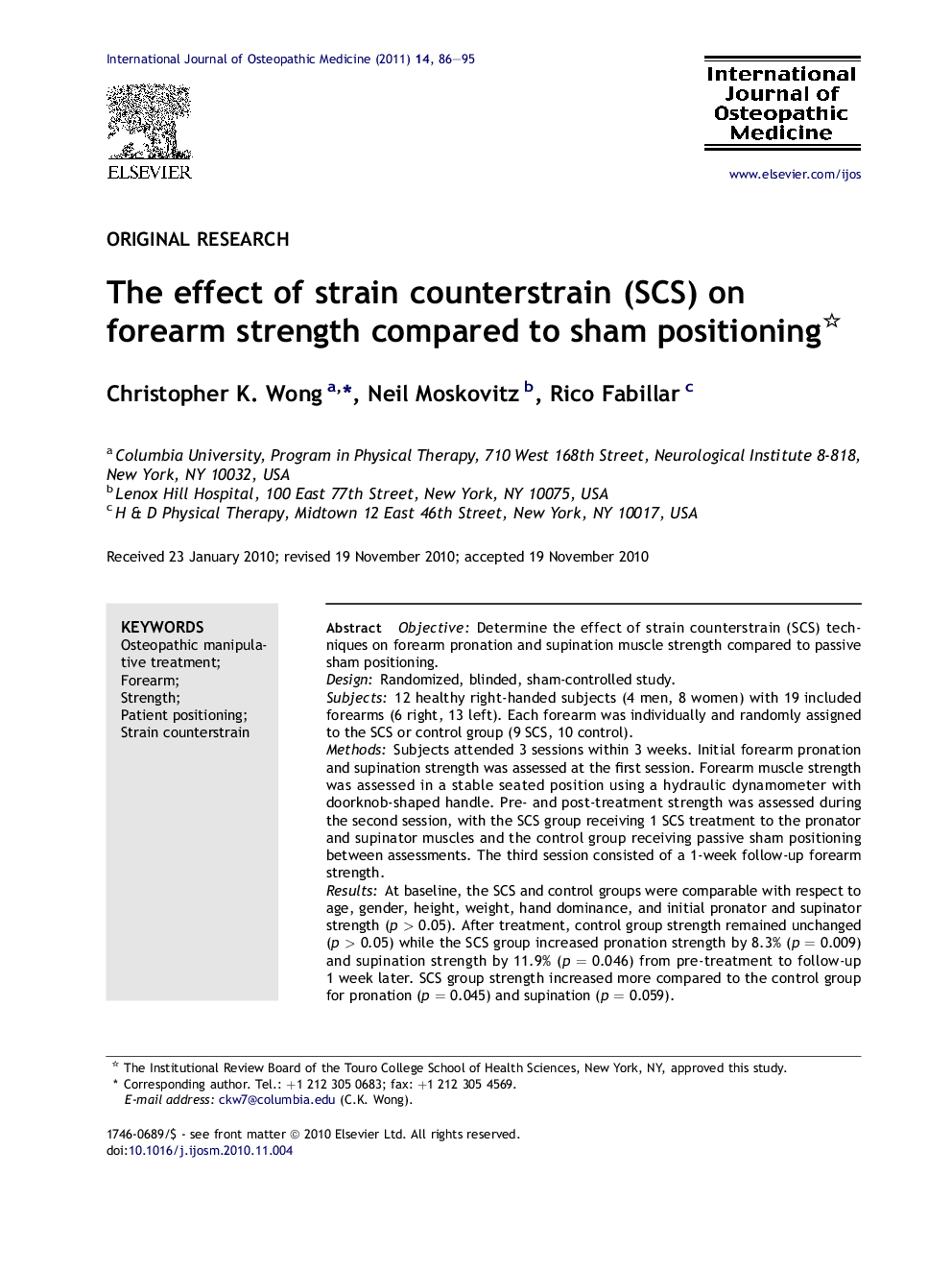| Article ID | Journal | Published Year | Pages | File Type |
|---|---|---|---|---|
| 2618805 | International Journal of Osteopathic Medicine | 2011 | 10 Pages |
ObjectiveDetermine the effect of strain counterstrain (SCS) techniques on forearm pronation and supination muscle strength compared to passive sham positioning.DesignRandomized, blinded, sham-controlled study.Subjects12 healthy right-handed subjects (4 men, 8 women) with 19 included forearms (6 right, 13 left). Each forearm was individually and randomly assigned to the SCS or control group (9 SCS, 10 control).MethodsSubjects attended 3 sessions within 3 weeks. Initial forearm pronation and supination strength was assessed at the first session. Forearm muscle strength was assessed in a stable seated position using a hydraulic dynamometer with doorknob-shaped handle. Pre- and post-treatment strength was assessed during the second session, with the SCS group receiving 1 SCS treatment to the pronator and supinator muscles and the control group receiving passive sham positioning between assessments. The third session consisted of a 1-week follow-up forearm strength.ResultsAt baseline, the SCS and control groups were comparable with respect to age, gender, height, weight, hand dominance, and initial pronator and supinator strength (p > 0.05). After treatment, control group strength remained unchanged (p > 0.05) while the SCS group increased pronation strength by 8.3% (p = 0.009) and supination strength by 11.9% (p = 0.046) from pre-treatment to follow-up 1 week later. SCS group strength increased more compared to the control group for pronation (p = 0.045) and supination (p = 0.059).ConclusionsForearm strength increased after SCS in a healthy population with muscle tenderness, with greater strength increase apparent than after passive sham positioning.
